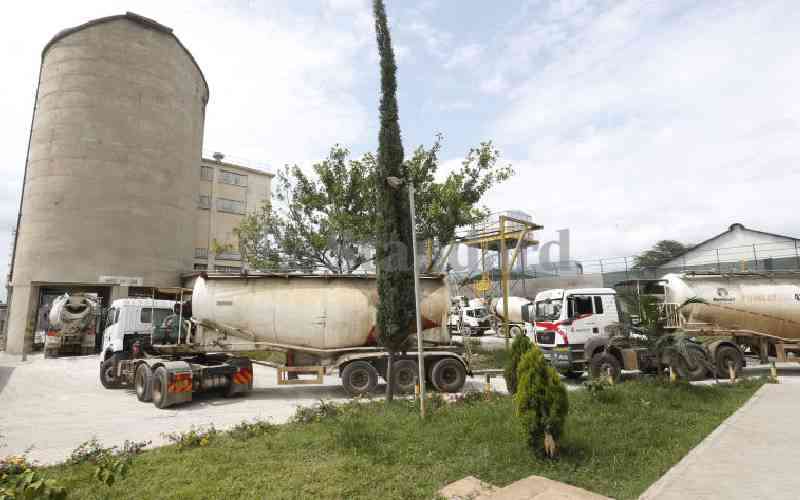Devolution has triggered numerous economic activities in the counties. In particular, energy-intensive activities such as mining, irrigation of large tracts of land and agro-based industry have sprung up, raising the need for more energy.
Aware that the activities in the counties will increase demand for energy, the Government in 2013 proposed a roadmap that would raise installed capacity by 5,000MW (from 1,664.1MW to slightly over 6,700MW by 2016). This ambitious plan is outlined in the Ministry of Energy and Petroleum's Investment Prospectus for 2013-2016: Power to Transform Kenya.
With the 2016 March deadline to deliver the 5000MW additional capacity looming, players in the energy generation sector are taking stock of their contribution to the target output.
One of the areas that have seen increased interest from both the Government and private sectors is the development of renewable energy systems, including solar, geothermal, wind, biomass and biogas. These resources are abundantly available locally.
There is a general consensus that increased use of the environmentally friendly energy technologies for industrial and domestic use will reduce dependence on the expensive, dirty fossil energies, and also help improve energy security.
Wind and geothermal have been around for longer, attracting huge investments. Awareness for the opportunity for solar in Kenya is gaining momentum, thanks to technological improvements that have enabled improved efficiency and dramatically lower costs, helping to boost solar's contribution to national power output, both on-grid and off-grid.
It is widely believed that Kenya stands to benefit from increased investment in solar due to the country's plentiful daylight hours. This is a big advantage considering that Germany, which is the world leader in solar energy production, has an installed capacity of 35.736GW but enjoys less solar irradiance than Kenya. China is the second largest solar power producer with an installed capacity of 18.526 GW.
Another reason for the growing interest in solar is the speed of deployment. Projects can be installed in just a few weeks, whereas it takes years to build coal and nuclear power stations.
Taking these benefits into consideration, the government and the private sector are already installing solar PV systems on the ground and on roofs. This is in part being enabled by the growing presence of local, reliable partners who are able to design and install systems, and also carry out all necessary maintenance, for the lifetime of the projects – on average around 30 years for solar energy systems.
As part of its 2009 Rural Electrification Master Plan, the Government has been boosting off-grid solar production in remote rural areas. According to Energy PS Joseph Njoroge, the Government has installed solar on around 1,400 public institutions at a cost of Sh3 billion. The total installed capacity is 2.15 MW.
A further 100 institutions will benefit from solar under plans in the 2015-2016 Financial Year.
This is all very encouraging; the Government clearly sees solar as a viable technology capable of providing free, clean energy for the benefit of public buildings.
In the private sector, the growing interest in solar in Kenya is evidenced by projects that have been deployed by several commercial enterprises.
The successful completion of the solar carport on the roof of the new Garden City complex this year, built by Solarcentury in Nairobi, is a great example of how businesses are committing to a greener future, and taking a long term view of their energy needs. The solar hybrid system on the uppermost storey of the car park is the largest carport in Africa and generates enough energy to power 550 urban homes in Kenya.
It capitalises on Kenya's exceptional solar resource, and reduces carbon emissions by around 18,750 tonnes over the lifetime of the solar system while also providing shaded parking.
Stay informed. Subscribe to our newsletter
The current focus on environmentally friendly energy technologies to generate energy for industrial and domestic use will improve the affordability of energy, and also increase energy security by reducing the reliance on oil-based energy sources.
Towards this end, solar is not only making a significant contribution to the country's green energy supply, but is also supporting the Government's pledge to enhance access to affordable and reliable power.
 The Standard Group Plc is a
multi-media organization with investments in media platforms spanning newspaper
print operations, television, radio broadcasting, digital and online services. The
Standard Group is recognized as a leading multi-media house in Kenya with a key
influence in matters of national and international interest.
The Standard Group Plc is a
multi-media organization with investments in media platforms spanning newspaper
print operations, television, radio broadcasting, digital and online services. The
Standard Group is recognized as a leading multi-media house in Kenya with a key
influence in matters of national and international interest.
 The Standard Group Plc is a
multi-media organization with investments in media platforms spanning newspaper
print operations, television, radio broadcasting, digital and online services. The
Standard Group is recognized as a leading multi-media house in Kenya with a key
influence in matters of national and international interest.
The Standard Group Plc is a
multi-media organization with investments in media platforms spanning newspaper
print operations, television, radio broadcasting, digital and online services. The
Standard Group is recognized as a leading multi-media house in Kenya with a key
influence in matters of national and international interest.







